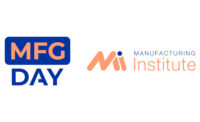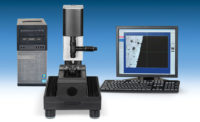STUTTGART, GERMANY-Daimler AG achieved earnings in the second quarter of 2011 that were among the best in a quarter in the Group's entire history: Group EBIT amounted to EUR 2,581 million, or $3.7 million (Q2 2010: EUR 2,104 million).
Net profit increased to EUR 1,704 million, or $2.7 million, which was also a record level (Q2 2010: EUR 1,312 million), and earnings per share amounted to EUR 1.51 (Q2 2010: EUR 1.18).
"Daimler developed very dynamically in the second quarter in terms of unit sales, revenue and earnings," says Dieter Zetsche, chairman of the board of management of Daimler AG and head of Mercedes-Benz Cars. "The very good earnings trend is primarily a reflection of increased vehicle shipments by nearly all divisions. Mercedes-Benz Cars actually recorded its strongest-ever volumes and highest-ever quarterly EBIT."
Daimler Trucks and Mercedes-Benz Vans were also able to significantly increase their unit sales compared with the prior-year quarter in all major regions. Daimler Financial Services profited in particular from the lower cost of risk.
In the second quarter of 2011, the Daimler Group sold 527,600 cars and commercial vehicles worldwide, surpassing the figure for the prior-year period by 6%.
The net liquidity of the industrial business developed very well and remained at a high level of EUR 11.5 billion at June 30, 2011 (December 31, 2010: EUR 11.9 billion). The positive free cash flow and the intra-Group dividend payment by the financial services business were offset by the payment of the dividend of EUR 2.0 billion for the year 2010. Subject to the approval of the Supervisory Board, Daimler plans to contribute further cash to its German pension plan assets of up to EUR 2 billion in the second half of 2011.
At the end of the second quarter of 2011, Daimler employed 266,114 people worldwide (June 30, 2010: 257,658). Of that total, 166,840 people were employed in Germany (June 30, 2010: 163,507).
Mercedes-Benz Cars continued its positive business development and increased its unit sales to a new record of 357,600 vehicles in the second quarter (Q2 2010: 342,500). The Mercedes-Benz brand also set a new record with sales of 327,800 units (Q2 2010: 314,400). Revenue rose by 4% to EUR 14.6 billion.
The division achieved record EBIT of EUR 1,566 million (Q2 2010: EUR 1,376 million). Its return on sales was 10.7%, which was also a new record (Q2 2010: 9.8%). This positive earnings development was the result of further growth in unit sales, especially in the mid-sized segment and with SUVs. A good product mix, better pricing and lower warranty expenditures also contributed to the strong earnings. There were opposing, negative effects on earnings from increased prices of raw materials, increased use of resources in connection with the ramp-up of new vehicles and exchange-rate effects.
Daimler Trucks increased its unit sales by 9% to 91,500 vehicles (Q2 2010: 83,800) and achieved revenue growth of 14% to EUR 6.6 billion (Q2 2010: EUR 5.9 billion).
The division posted EBIT of EUR 474 million (Q2 2010: EUR 300 million) and a return on sales of 7.1% (Q2 2010: 5.1%). The rise in earnings is primarily due to a renewed significant increase in unit sales in Europe and the United States. There was an opposing, negative impact on second-quarter earnings from increased material costs and high advance expenditure for the current product offensive. Earnings at Trucks Asia were reduced by decreases in unit sales and revenue (minus 32% and minus 24% respectively), mainly caused by the natural disaster in Japan.
Unit sales by Mercedes-Benz Vans increased by 14% to 68,000 vehicles (Q2 2010: 59,400). Revenue of EUR 2.2 billion was also significantly higher than in the prior-year quarter (Q2 2010: EUR 2.0 billion).
The division posted EBIT of EUR 206 million (Q2 2010: EUR 127 million) and its return on sales improved to 9.2% from 6.4% in the prior-year quarter. The main factors behind this development were the ongoing market recovery and significant growth in unit sales, especially in Germany and the United States. The excellent market reception for the new-generation Vito and Viano models made a major contribution. Earnings were also positively affected by sustained efficiency improvements and better pricing. On the other hand, the division's EBIT was negatively affected by higher material costs.
Daimler Buses sold 10,600 buses and bus chassis worldwide in the second quarter (Q2 2010: 10,800). Revenue of EUR 1.17 billion was slightly lower than in the prior-year period (Q2 2010: EUR 1.21 billion).
The division's EBIT of EUR 61 million did not quite match its very good prior-year earnings (Q2 2010: EUR 79 million). Its return on sales was 5.2% (Q2 2010: 6.6%). This earnings decrease was caused by lower unit sales of complete buses in Europe, which could not be offset by the positive development of business in Latin America and Turkey. Negative exchange-rate effects were an additional factor.
Daimler Financial Services' contract volume in the sales-financing and leasing business of EUR 63.1 billion at the end of the second quarter was slightly lower than at the end of 2010 (-1%). Adjusted for exchange-rate effects, its contract volume increased by 3%. New business of EUR 8.4 billion was 7% higher than in the prior-year quarter.
The division's EBIT of EUR 340 million was substantially higher than in the prior-year period (Q2 2010: EUR 171 million). The improvement in earnings was mainly caused by lower risk provisions and better interest margins.
The divisions' EBIT is reconciled to Group EBIT. This reconciliation primarily reflects the proportionate share of the results of the equity-method investment in EADS as well as other gains and losses at the corporate level.
In light of the better than anticipated performance in the first half of 2011 and the currently good market demand, the Daimler Group now targets EBIT from the ongoing business in 2011 that will be better than previously expected and will very significantly exceed the level of 2010. Developments in the first two quarters have shown that the Group continues to make good progress towards the targeted rates of return to be achieved on a sustained basis as of the year 2013. Those targeted rates of return are 10% for Mercedes-Benz Cars, 8% for Daimler Trucks, 9% for Mercedes-Benz Vans and 6% for Daimler Buses; the targeted return on equity for Daimler Financial Services is 17%.
On the basis of the divisions' planning, Daimler expects to achieve another increase in Group revenue to significantly more than EUR 100 billion in full-year 2011. The growth should be driven by all of the automotive divisions.
Total unit sales will also increase significantly (2010: 1.9 million vehicles). Daimler assumes that unit sales in the third and fourth quarters of this year will be higher than in the respective prior-year quarters for all divisions.
In view of the continuation of generally good market prospects combined with numerous model changes and new products, Mercedes-Benz Cars assumes that the Mercedes-Benz brand will increase its unit sales to a new record in 2011. Thanks to the up-to-date and competitive model range, the division will profit also in the year 2011 from strong demand for the numerous new models in the C-Class segment and from the continuing market success of the S-Class.
The new-generation C-Class sedan and station wagon and the new SLK roadster have been providing additional sales impetus since late March 2011. Deliveries of the C-Class coupe started in June, to be followed by the new model of the M-Class in September and the roadster version of the Mercedes-Benz SLS AMG in the fourth quarter. In November, the new B-Class will be launched – the first of four new models in the compact-car segment.
On the engines side, Daimler is introducing its particularly fuel-efficient four, six and eight-cylinder engines and the eco-start-stop technology in additional models, thus further reducing the fleet's CO2 emissions. With the new generation of the C-Class, for example, the C 220 CDI is available with fuel consumption of just 4.4 liters per 100 kilometers and CO2 emissions of 117 grams per kilometer.
For the smart brand, the division anticipates unit sales at roughly the same level as in 2010 due to the full availability of the new generation of the smart fortwo.
Daimler Trucks will post strong growth in unit sales compared with 2010. Due to the economic upswing, the division anticipates encouraging growth rates in most of its core markets. In Western Europe, it will profit from the rapid market growth and will continue to occupy the leading position in the medium and heavy-duty segments. And it is also the market leader in Classes 6 to 8 of the dynamically expanding truck market in the NAFTA region.
The aftereffects of the earthquake are still having an impact on unit sales in Japan, although Trucks Asia otherwise has high levels of orders received. It anticipates a stabilization of this region's market in the second half of the year. The division will further improve its position in other parts of Asia, especially China, and in other emerging markets with high growth rates. Projections are supported by current incoming orders: In the first half of 2011, Daimler Trucks received orders for 240,200 trucks. This is the highest volume since record year 2006 and 42% more than in the prior-year period. Unit sales in the second half of 2011 are therefore expected to surpass the unit sales posted in the first half of the year.
Due to the ongoing market recovery, Mercedes-Benz Vans also expects to achieve growth in unit sales in its key markets in full-year 2011. In Western Europe, the division will defend its leading market position for medium-sized and large vans and will participate in the market's growth. Significant increases in unit sales are expected particularly in the United States and China – also due to the launch of the new Sprinter. Increased production capacities in Argentina will also boost growth.
Daimler Buses assumes it will sell more than 40,000 complete buses and bus chassis in the year 2011, although this high volume will be due solely to the positive development of chassis sales in Latin America. The development of business with complete buses in Western Europe and North America is expected to remain weak.
Daimler Financial Services anticipates growth in its worldwide contract volume and new business in the second half of the year. The division also assumes that credit-risk costs will remain lower than in the prior year. However, interest rates are expected to rise as the year progresses.
Due to the strong demand for its products, the Daimler Group assumes that its worldwide workforce will expand compared with the end of 2010.
The special items shown in the following table affected EBIT in the second quarters of the years 2011 and 2010:
Get our new eMagazine delivered to your inbox every month.
Stay in the know with Quality’s comprehensive coverage of the manufacturing and metrology industries.
SIGN UP TODAY!Copyright ©2024. All Rights Reserved BNP Media.
Design, CMS, Hosting & Web Development :: ePublishing

